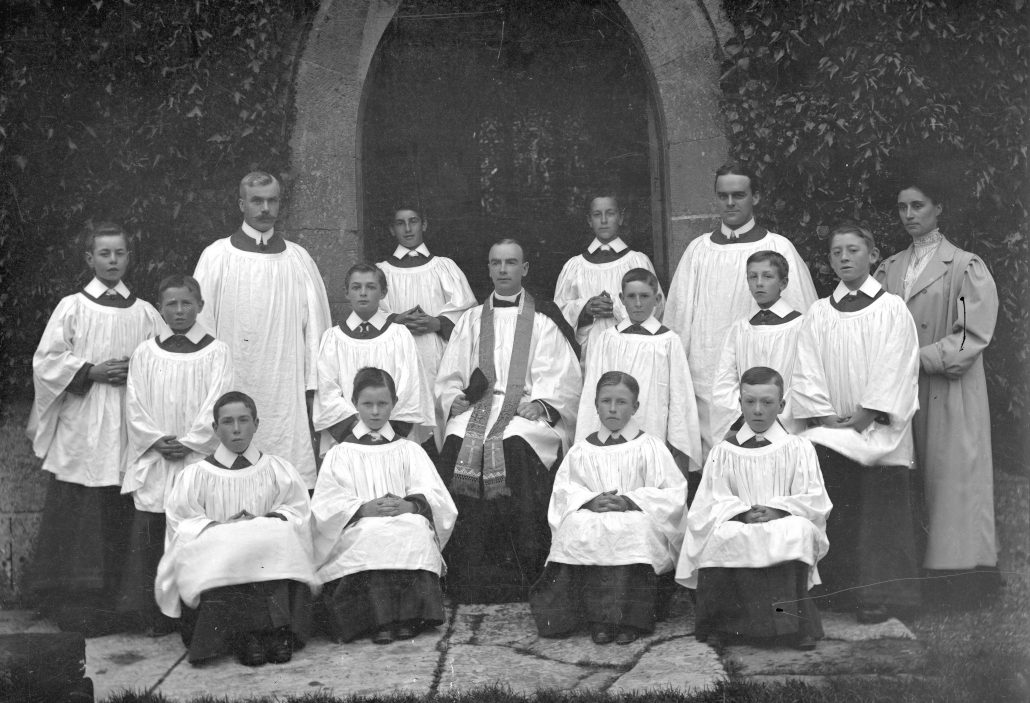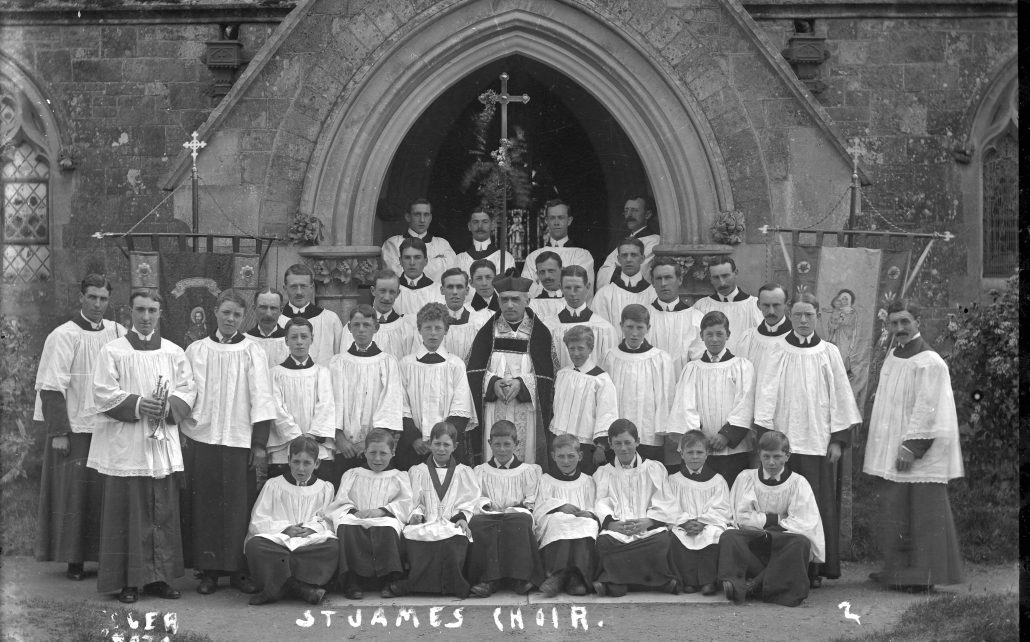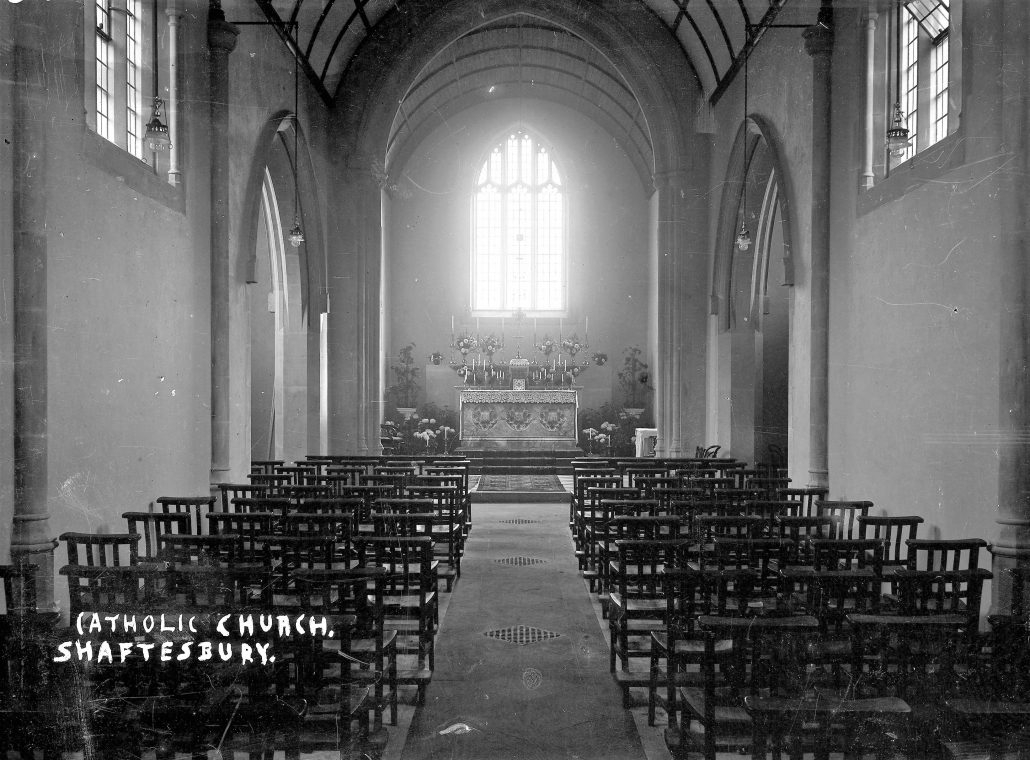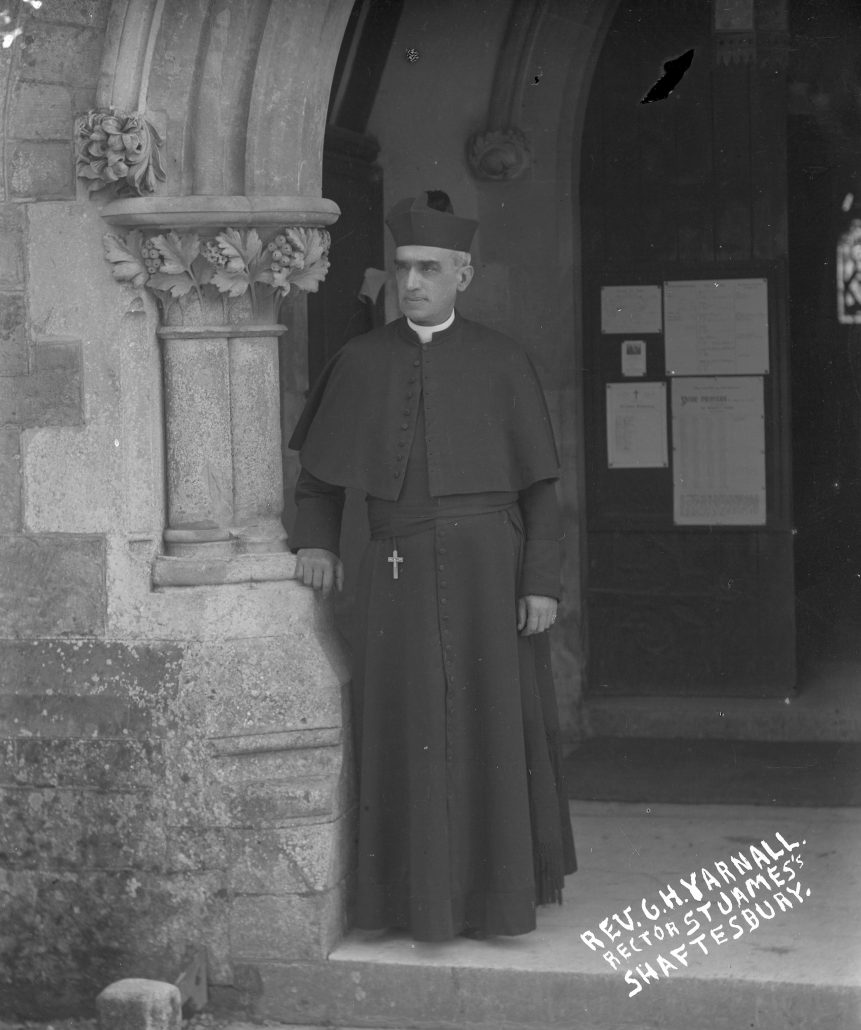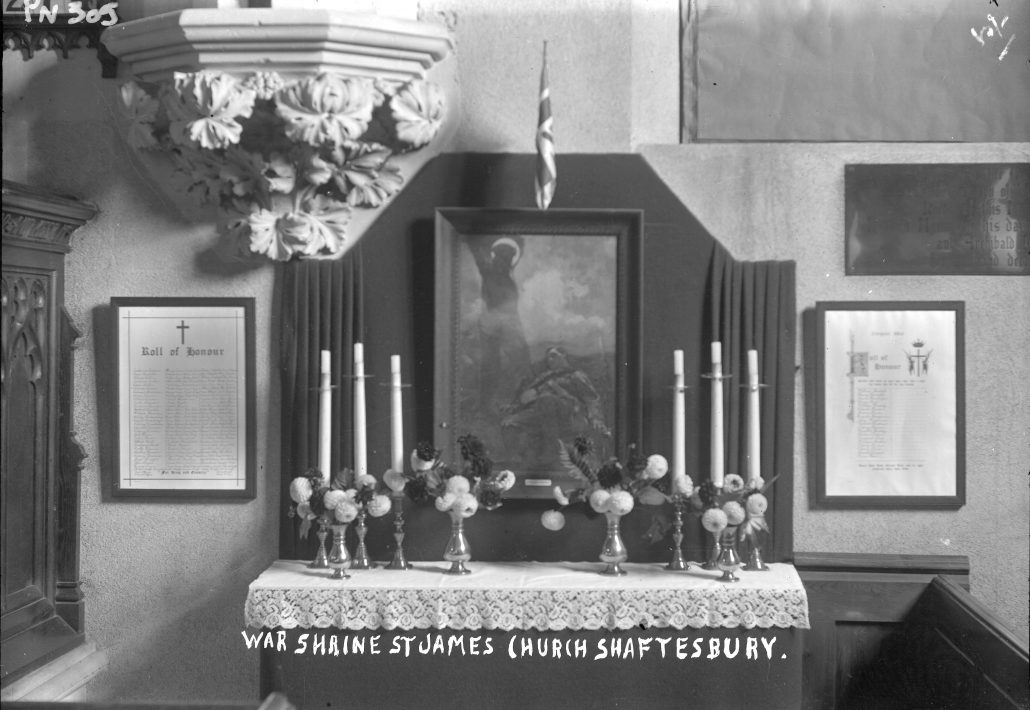Places of Worship
Churches In and around Shaftesbury
In the 1911 Kelly’s Directory, there are three Anglican churches listed, St Peters, St James and Holy Trinity. St Peter’s was rarely used, but had been maintained.
Holy Trinity was the main parish church, and could accommodate over 800 people. In 1908 a new chancel was added, and the Shaftesbury Pageant in 1907 was held to raise funds towards its cost. The Reverend Frederick Ehlvers was the rector from 1885 until 1915, when he was replaced by the Reverend Charles Rockett, who was also an honorary chaplain to His Majesty’s forces.
The Reverend George Yarnall was the rector of St James from 1900 to 1927. He was an American who became naturalised when he came to Britain. He was offered the living by Lord Shaftesbury who was a high churchman, and The Reverend Yarnall introduced Anglo-Catholic practices during his incumbency. He was an excellent preacher and also built up the church choir, so his congregation came from far and wide.
The Angelus bell in St James was first rung during World War One to remind the faithful to pray for men of the parish who were serving at the front. In 1916 a thurible, or incense burner, was given and first used in St James, and in 1918 a statue of the Madonna and Child donated by a grateful parishioner.
The Roman Catholic Church in Salisbury Street was built in 1910, and could seat 200 people.
Other places of worship in Shaftesbury included:
the Congregational chapel in Mustons Lane
the Wesleyan Methodist chapel in Parsons Pool (rebuilt 1907)
the Meeting House for the Society of Friends (the Quakers) at the top of Gold Hill
the Primitive Methodist chapel in St James Street (built 1895)
the Ebenezer Hall, an Open Brethren meeting house, Salisbury Street (built 1886).
There was also a temperance hall built in Bell Street in 1878, but by 1915 it had changed its use to a Masonic Hall.
As might be expected, the local churches of all denominations were involved in supporting the community both spiritually and practically. Parish magazines are good sources of information, and parish magazines for the 1914-1918 period serve as a running commentary on events and attitudes during the Great War.
Extracts from St James’ Parish Magazine, written by the Rev. Yarnall
1914
On July 29th the patronal festival was celebrated and the church fete held at the Rectory. It was a great success with stalls, games and afternoon tea, followed by dancing and fireworks in the evening. The Town Band played throughout the day.
Only ten days later, the rector wrote: “The thing that we have feared for years has, alas! come upon us- a European War- with all its horrors. Two weeks ago the world was serenely at peace; today all Europe is ablaze!”… “A number of men from our Parish and Congregation are with His Majesty’s Forces, both on land and sea.” …”When the Angelus rings at noon, everybody should pause for a moment, as the Bishop suggests, and say a short prayer such as “O God protect our soldiers and sailors and grant to us victory and peace.”
In September the rector encouraged young men to join up, and called for fund -raising to support the Prince of Wales Fund and the Red Cross. Church collections as usual were given to the hospital. Even at this early stage of the war, 43 men from St James had already volunteered for the forces. The rector’s monthly letters to his parishioners passionately condemn the actions of Germany and its allies, and he goes into some detail about the political events of the time.
1915
In January the Reverend Yarnall wished his congregation a Happy New Year. He noted that money was collected for Belgian children and the Red Cross at Christmas, and that St James lost its first soldier, Sidney Parsons, killed in action on December 3rd 1914.
By Easter 1915, many households had taken in billeted men, some of whom attended the church. The Easter offering amounted to over £34 (worth £2,700 in 2017).
In August the rector thanked his parishioners for supporting the French Flag Day, and those who sent cigarettes to wounded French soldiers. His November letter remarks “more and more of our boys have enlisted, and it would seem as ere long we would have hardly any young men in our Congregation”. This also seriously affected the choir, and other church activities.
In a letter from the Front to the rector from Stan Foote, the young soldier writes of himself and another St James volunteer: “We both are very proud to think our Choir – or rather your late Choir – should be so well represented in the ranks of His Majesty’s Forces. … I am pleased to say that since we received your book on French, it has helped us a good deal”.

